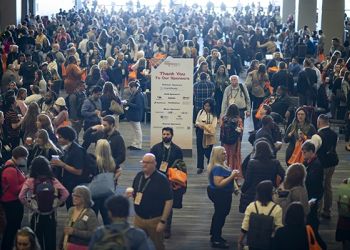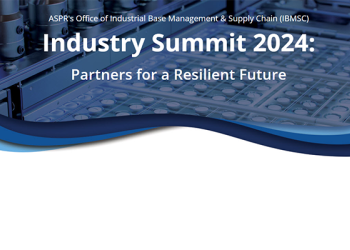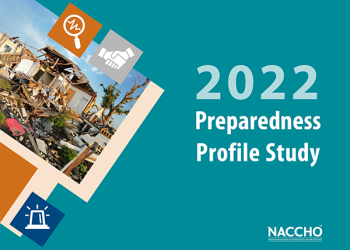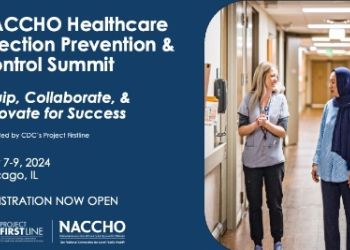
The final day of the 2024 Preparedness Summit opened with the conference’s inaugural 5K / 1 Mile Walk in support of the Cleveland-based charity, City Mission. The morning’s sessions then kicked off with presenters leading nearly a dozen learning sessions, partnership case studies and demonstrations for the conferences over 2,800 attendees.
The conference concluded with the plenary discussion, Testing the Limitless Possibilities of Artificial Intelligence in Emergency Preparedness and Response: How to Be Smart About It.
Brian Kamoie, Managing Director, Deloitte, set the stage by sharing an anecdote of how artificial intelligence follows us in our day-to-day lives, even in his own trip to the Preparedness Summit. He shared an overview of AI and a history of generative AI to lay the groundwork for the panel discussion.
Mitch Stripling, Director, NYC Pandemic Response Institute, emphasized the impact AI will have on emergency response on a fundamental level, with implications for everything from augmented reality to drone technologies. Stripling urges us to be ready for the interplay this will have with expectations from the public for how quickly we respond to emergencies.
Terin Williams, Senior Cyber (Ops) Advisor, IOD, Cybersecurity and Infrastructure Security Agency (CISA), discussed the risks associated with AI, noting that while it has advantages for us, it gives similar advantages to adversaries. She noted the need to have manual processes in place to continue critical functions and also stressed the need to have policies in place that clearly outline how AI can be used within agencies.

Dr. E. Oscar Alleyne, Managing Director, Public Health Division, MITRE Health FFRDC, talked about the importance of situational awareness when using AI and the need to gather as much information as possible to define the resources available, mitigate threats, and define infrastructure needs. He urged attendees to think about how we can tailor AI tools to protect information and use information science to give us the upper hand in AI.
To put the conversation into perspective, panelists discussed a flooding scenario and how AI may be helpful to response activities. A Chatbot then demonstrated in real-time various uses for AI in public health preparedness response.
Kamoie left attendees with three takeaways: (1) Get ready [to use AI], (2) Trust but verify [AI outputs]. Have a human in the [review] process, and (3) Make sure your organization has a policy that relates to governance. He noted that while AI is game-changing technology, it comes with unique and novel risks that we must consider for effective emergency response.
Additional resources from the conversation:
- Stripling shared the “Grand Challenge Competition for Innovations in Public Health Emergencies,” which is accepting submissions through March 31, 2024.
- Williams referenced CISA’s Secure by Design approach and the NIST Framework.
- Alleyne referenced the Coalition for Health AI.
Laura Biesiadecki, Preparedness Summit Planning Committee Co-Chair and Senior Director of Preparedness at NACCHO, concluded the conference with an invitation to the 2025 Preparedness Summit in San Antonio, Texas, April 28-May 1, 2025.
Click here to see additional photos from the day.









